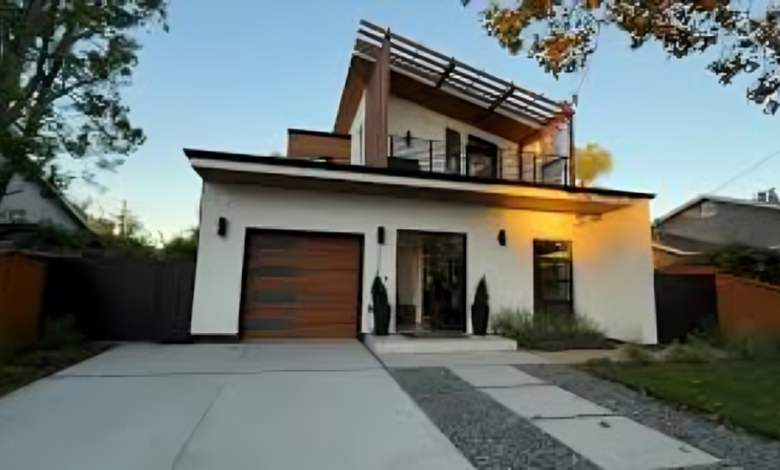Tesla Homes The Future of Sustainable Living

In recent years, Tesla has transformed the world of energy-efficient living with its innovative approach to home sustainability. Tesla Homes, equipped with solar technology and energy storage solutions, are revolutionizing the way people consume and store electricity. By integrating renewable energy sources with cutting-edge battery technology, Tesla is making the dream of a self-sufficient home a reality.
What Are Tesla Homes?
Tesla Homes refer to residential properties that utilize Tesla’s solar panels, Solar Roof, and Powerwall battery storage systems to create a sustainable, off-grid living experience. These homes are designed to harness solar energy efficiently, store excess energy, and optimize power consumption, reducing reliance on the traditional electricity grid.
Key Features of Tesla Homes
1. Tesla Solar Panels
Tesla’s solar panels are designed to be sleek, efficient, and highly durable. These panels absorb sunlight and convert it into electricity, providing a clean and renewable power source for the home.
2. Tesla Solar Roof
Unlike traditional solar panels, Tesla’s Solar Roof is made of photovoltaic shingles that seamlessly integrate into the home’s design. These shingles not only generate electricity but also enhance the aesthetic appeal of the house.
3. Tesla Powerwall
The Tesla Powerwall is an advanced home battery that stores excess solar energy generated during the day for use at night or during power outages. It ensures uninterrupted electricity supply, even when the sun isn’t shining.
4. Energy Efficiency and Smart Integration
Tesla Homes come equipped with intelligent energy management systems that optimize energy consumption. Homeowners can monitor and control their energy usage through Tesla’s mobile app, making it easier to maximize efficiency and savings.
Benefits of Tesla Homes
1. Energy Independence
With Tesla Homes, homeowners can generate and store their own electricity, reducing dependence on the traditional power grid and lowering electricity bills.
2. Eco-Friendly Living
By utilizing solar energy, Tesla Homes contribute to reducing carbon footprints and minimizing environmental impact.
3. Cost Savings Over Time
Although the initial investment in Tesla solar technology may be high, the long-term savings on electricity bills and potential tax incentives make it a cost-effective solution.
4. Increased Home Value
Homes equipped with Tesla’s solar and energy storage solutions are highly desirable in the real estate market, often fetching higher resale values.
5. Reliability During Power Outages
With Tesla Powerwall, homeowners can enjoy uninterrupted power, even during grid failures or natural disasters.
Tesla Homes vs. Traditional Homes
| Feature | Tesla Homes | Traditional Homes |
|---|---|---|
| Energy Source | Solar Power + Battery Storage | Grid Electricity |
| Cost Savings | High long-term savings | Higher utility bills |
| Eco-Friendliness | Zero carbon emissions | Relies on fossil fuels |
| Power Backup | Tesla Powerwall storage | Limited backup (if any) |
| Smart Energy Management | AI-based energy optimization | Manual control |
How to Get a Tesla Home
1. Assess Your Energy Needs
Determine how much energy your home consumes and whether a Tesla Solar Roof or Tesla solar panels would be more suitable for your needs.
2. Choose a Tesla Solar Solution
Decide between Tesla’s Solar Roof or traditional solar panels, based on budget, home design, and energy goals.
3. Install a Tesla Powerwall
For optimal energy independence, integrating a Tesla Powerwall is essential to store excess energy and provide backup power.
4. Consult with a Tesla Energy Expert
Tesla offers consultations to help homeowners select the best solar solution tailored to their needs.
FAQs About Tesla Homes
Q1: How much does a Tesla Home cost?
The cost varies based on home size, energy needs, and Tesla products installed. On average, a Tesla Solar Roof can cost between $30,000 and $50,000, while Tesla Powerwall costs around $8,500 per unit.
Q2: Can Tesla Homes go completely off-grid?
Yes, with sufficient solar panels and Powerwall batteries, Tesla Homes can operate independently from the grid.
Q3: How long do Tesla solar panels last?
Tesla solar panels have a lifespan of around 25-30 years, making them a long-term investment.
Q4: Are Tesla Homes eligible for tax incentives?
Yes, homeowners may qualify for federal and state solar tax credits, reducing the overall cost of installation.
Q5: Is Tesla Powerwall necessary for a Tesla Home?
While not mandatory, a Powerwall enhances energy efficiency by storing excess solar power for later use.
Conclusion
Tesla Homes are paving the way for a sustainable and energy-efficient future. By integrating Tesla solar panels, Solar Roof, and Powerwall, homeowners can enjoy energy independence, lower electricity costs, and a reduced carbon footprint. Investing in Tesla Homes is not just a step toward innovation but a leap toward a cleaner and more self-sufficient way of living.


